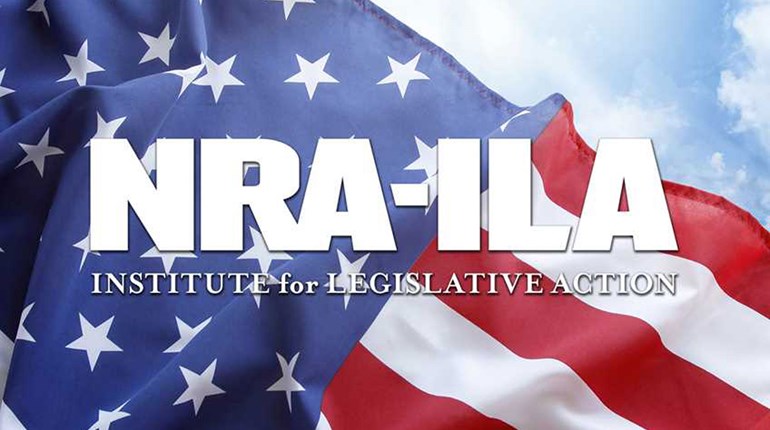
The below is an excerpt from the 1978 book, Olympic Shooting, written by Col. Jim Crossman and published by the NRA. Read Part 1.
1960—Rome: 100% Improvement, One Plus One (Part 2)
By Colonel Jim Crossman
Team Captain Swanson neglected his patients once again to set a new record—the most times on an Olympic team for any American shooter. Doc Swanson was twice a shooter and 1960 was his second stint as team captain.
Sid Carpenter had done some rifle shooting, but more recently had been heavily involved in the development of the Army's program. John Hurst was a well-known pistol shooter and had many awards to his name, including high police officer at the 1959 National Matches. Gary Anderson was the alternate and did not shoot. Bill McMillan (pictured at top) had shot with the team in 1952, but had lost out in the 1956 tryouts due to gun trouble.
Larry Mosely and Nelson Lincoln had come up through the Army farm system and had a lot of shots behind them. John Foster had started shooting in his teens and had specialized in position shooting, winning the National Position Championship in 1959. Dan Puckel had also started young and shot well during high school and college. He was alternate on the 1956 Olympic team and shot on the 1958 and 1959 international teams. Jim Hill had started shooting indoor matches while in high school. In his first years in the Marine Corps his assignments kept him from much shooting, but by 1956 he was shooting well enough to win the National Service Rifle Championship as well as many lesser awards. This was his first year on an international team.
A trapshooter by name of Arnold Riegger was in Fort Benning in early 1960 and had the chance to shoot a couple of strings on the new international trap field. A few months later he went to one of the preliminary tryouts, using the modified American trap system. He won this but told them he could not go to Benning for the final tryouts. When he went home and told his wife, she straightened him out in a hurry and sent him off to Fort Benning. After a few days of practice, he came through with a blazing 100 straight for the first day of the tryouts. Riegger was shooting his pet Model 12 Winchester pump, a type of gun not much favored in this game because of the need for a quick second shot. But this did not really bother Riegger too much, as he needed his second shot only one time in the 100 birds.
Some folks were surprised that Riegger, with comparatively little practice, should be the first man to break 100 straight over the international field. But the shooters who knew his reputation were not amazed. He had done some outstanding trapshooting—such as high average in the United States in 1949, 99.1 percent on 2,800 birds; high in 1955 with 98.6 percent on 4,500 birds; high in 1956 with 99.1 percent on 2,700 birds; second high in 1959 with 99.2 percent on 5,560 birds—and so on, for pages and pages if you want a detailed account.
Riegger's 100 straight on the first day and a 96 and a 97 on the following days gave him 293 for the first position on the team.
Second was a relative newcomer to the shotgun game, Jim Clark. His record-breaking career did not begin until 1951, when as a junior he won just about everything he could, following up with additional records and wins in subsequent years. The strange thing is that his records were set in skeet shooting, not trapshooting. Clark switched over to international trap after he went to Fort Benning and did a fine job.
The shotgun tryouts were conducted under the auspices of the Amateur Trapshooting Association, although the ATA did not finance the shotgun shooters on the team and the NRA provided all the administrative effort required to organize the team. The ATA effort was limited to sponsoring regional preliminary tryouts and overseeing the finals.
Shotgun shooters, both trap and skeet, had maintained a massive indifference to international and Olympic competition. Although the ATA owned beautiful permanent shooting grounds in Vandalia, Ohio, where its annual events were conducted, it did not have an international-style field. Further, the ATA secretary had stated that one would not be installed and that ATA did not offer any particular encouragement to the various clubs installing such a field. Two years before, ATA had entered a team in the international matches in Moscow, but the first requirement for team membership was that each man pay his own way—hardly the ideal method of picking the best shots.
A few years before, when the U.S. was being so badly trounced in Olympic and international competition, the NRA had undertaken a campaign to promote international shooting. In addition, it began to take an active part in the affairs of the UIT, and NRA officials and staff held several positions in the UIT and put in much effort and travel. Recognizing that it cost money to send teams overseas and that the international effort could not be maintained by having separate fund drives for each event, as in the past, the NRA directors set up an International Shooting Fund to be used only for the expenses of U.S. shooting teams in international competition. Special International Shooting Fund matches were established at the national championships, and clubs were encouraged to conduct shooting fund matches at other tournaments. This turned out to be a fine idea and there has been a small but steady trickle of money into the fund ever since.
Part 3 of our retrospective on shooting events at the Rome 1960 Olympic Games is coming soon. In the meantime, subscribe to the free Insider newsletter.
Read more: U.S. Earns Six Olympic Shooting Medals In Tokyo, Best Performance Since 1964


































